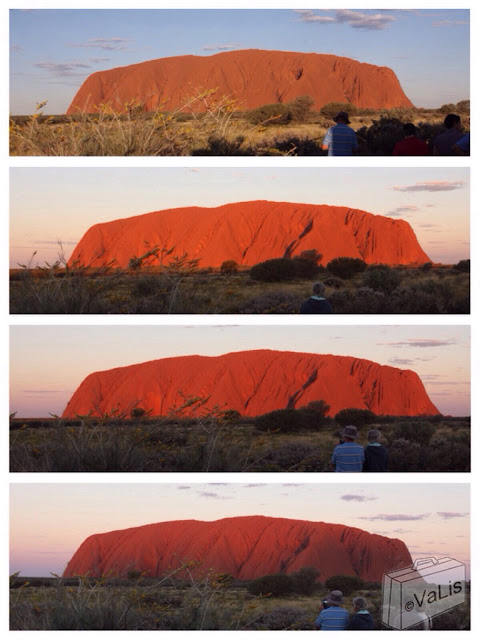But entry to the National Park of Uluru encompasses more than just Uluru. The other major site is Kata Tjuta, or the Olgas, and since entry is always for 3 consecutive days, we went there as well.
 |
| Driving towards the Olgas |
Kata Tjuta has a few different trails, but we opted for the most well known: the Valley of the winds trail. It starts and ends with a short trail to Karu lookout. From this lookout you have a view over the valley, but this is also a checkpoint. If the temperature is over 36'C the trail closes. During summer this happens a lot.
Since we did this hike in winter, we had no such limitations.
 |
| Trail head |
 |
| Red skin |
The last bit toward the Karingana lookout went up pretty steeply, clambering on all fours for a bit. and then suddenly we were there. What a view!
 |
| Karingana lookout: the highest point of the walk |
But while admiring the view, we understood how aptly named this 'Valley of the Wind' walk is. At Karingana lookout it was a lot colder than at the rest of the track, the wind was ON.
 |
| Valley of the wind |
The red rock had given away to green plants with a purple haze of dessert flowers in bloom. The temperature had increased, and I really don't want to imagine what it would be like doing this hike mid summer when it was this hot mid winter!
 |
| Myriad of flowers |
We sat watching them for 20 minutes or so, amazed that the cute little bird are so common in this part of the world. I
 |
| Zebra finch at a watering point |
We the walked on for the last little bit of the track, back to the Karu lookout. It was a lovely walk, and a lot more diverse than the obligatory Uluru circle walk.
Driving back to our campsite we had a few anxious moments though... We had gotten up early that morning to watch the sunrise over Uluru, and then drove directly to Kata Tjuta. And only when driving back realised that we're running on empty while the sun was setting. The closest petrol station was 50km away, and after sunset the park is of limits, so a very small chance of fellow drivers fining you. we turned off the aircon, folded in both mirrors, drove slowly and thankfully made it back on the last few drops of petrol.





















